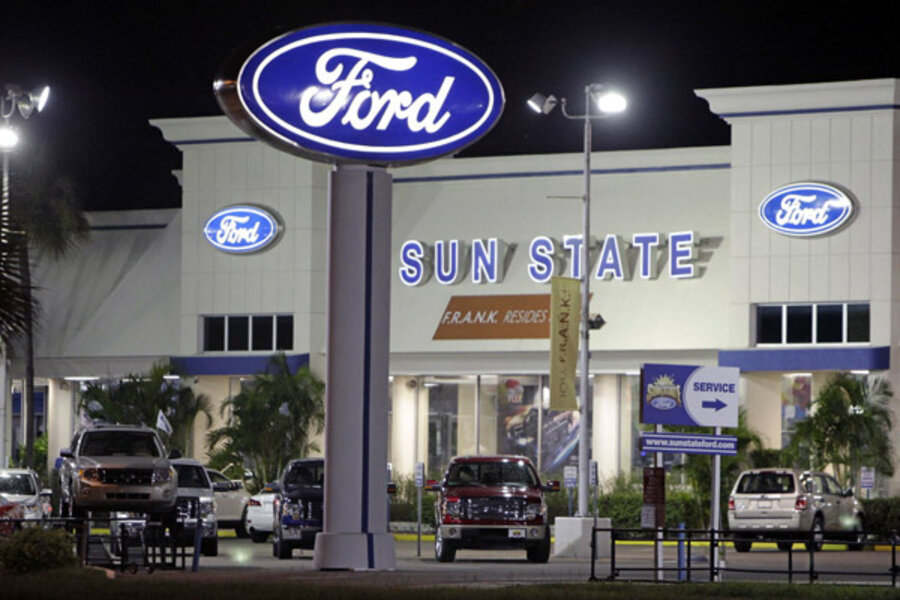Big Three report booming sales for 2011 as Americans unload old cars
Loading...
| Chicago
Smaller and more fuel-friendly vehicles are credited with boosting the year-end sales of US automakers. In data released Wednesday, each of Detroit’s Big Three – General Motors, Ford Motor Co., and Chrysler Group – enjoyed double-digit sales growth for 2011.
The greatest success story is Chrysler, which reported the highest rate of growth among the domestic competition. Unit sales for cars and trucks jumped 26 percent over 2010, resulting in 1.4 million vehicles sold in the US alone.
Chrysler, the No. 3 US manufacturer, reported the gains just two years after it filed for bankruptcy.
Michelle Krebs, a senior analyst with Edmunds.com, says the turnaround can be traced to the company’s famous Super Bowl ad last year, which became a viral hit online and ended up winning the 2011 Emmy Award for best commercial (see blow).
The ad, for the Chrysler 200, was set to an Eminem song and featured the rapper cruising the gritty back streets and downtown boulevards of Detroit. Its defiant tone and city pride – the tagline “imported from Detroit” entered the lexicon soon after – created an emotional tone that many said captured the narrative of the US auto industry itself.
“That was a milestone in terms of turnaround [for Chrysler]. That convinced people they were back. Sales went through the roof as a result,” says Ms. Krebs.
Sales of the Chrysler 200 alone jumped 661 percent last year compared with 2010.
GM sold 2.5 vehicles in the US last year, a 17.6 percent increase. Ford came in second with 2 million in unit sales, an 11 percent increase.
Total industry light vehicles sales, including imports, are expected to reach 12.8 million for the year, an 11.3 percent increase from 11.5 million sold last year.
Polk, an automotive research firm in Southfield, Mich., forecasts that US sales will increase 7.3 percent to 13.7 million in 2012. Industry sales peaked in 2000, when total US sales reached 17.4 million. Polk reports that luxury will represent the fastest-growing segment this year as prices lower and manufacturers offer more options in that market, from smaller cars to SUVs.
Small car segments drove sales for all three manufacturers, a trend that started in 2008 when gas prices first sailed over the $4 per gallon mark and the Obama administration issued fuel economy standards starting in model year 2017. By 2025, fuel efficiency standards for new cars and light trucks will reach 54.5 mpg.
Ford reports small-car sales increased 25 percent in 2011, the greatest rate increase in that segment for any US automaker. Fiesta sales had the greatest gain, jumping 195 percent from 2010, with 68,574 sold.
“The industry has never seen a time when all three [automakers] had very good small cars. They’re finally back in the small car market,” says Krebs.
Helping drive up new car sales is pent-up demand. According to data from Polk, the average age of a vehicle in 2010 was 11 years, up from 8.4 years in 1995. Because people held onto cars longer these past few years, pent-up demand is naturally cycling into new cars sale of late.
“The used car market supply is very low and prices are very high and yet people are desperate to buy because their vehicles are so old,” Krebs says.
Import automakers in Asia were hit hard by the 2010 tsunami and earthquake in Japan, which slowed automobile production and subsequent sales.
Toyota sales were down 7 percent in 2011 compared to the previous year. The company sold 1.6 million vehicles last year. Honda did not release year-end sales data by press time. However year-to-year sales in November showed a 6 percent decrease, according to Edmunds.





